Welcome to Luneburg! Travelers searching for a things to do in Lüneburg seeking information about this charming German town packed with medieval architecture and scenic canals. They might be curious about the city’s storied salt-trading past, the whimsical red-brick façades, or unique local cuisine. Our aim is to highlight the best ways to explore this northern gem—whether you’re arriving for a weekend or have several days to spare. We’ll detail the must-see sights, top dining suggestions, and practical tips for seamless wandering. Expect a relaxed pace: Lüneburg’s cozy atmosphere encourages lingering in squares and strolling along the Ilmenau River.
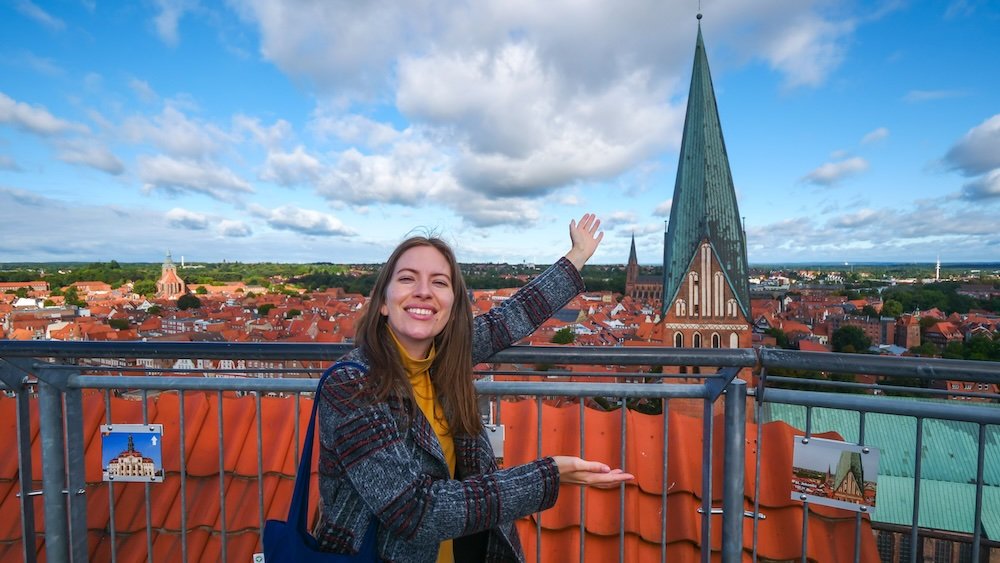
Why Lüneburg?
Yet questions crop up. Is one day enough, or should you book two nights? Which vantage points offer the most photogenic rooftops? Where to sample authentic German pub grub minus the tourist premium? And how do you skip potential parking headaches or decipher local train connections from Hamburg? This guide tackles all that—saving you from guesswork. We’ll ensure you don’t miss hidden treasures or overspend on underwhelming tours.
Our Travel Video From Luneburg, Germany on Samuel and Audrey YouTube Channel: Nomadic Samuel + That Backpacker as hosts
Lüneburg fits any pace. Families will find it welcoming with open squares for kids to frolic. Couples might enjoy the romantic waterways and candlelit dinners. Even day-trippers from Hamburg can soak up the magic if they time it right. Our suggestions cater to each type—spotlighting both relaxed meanders and more active, offbeat adventures.
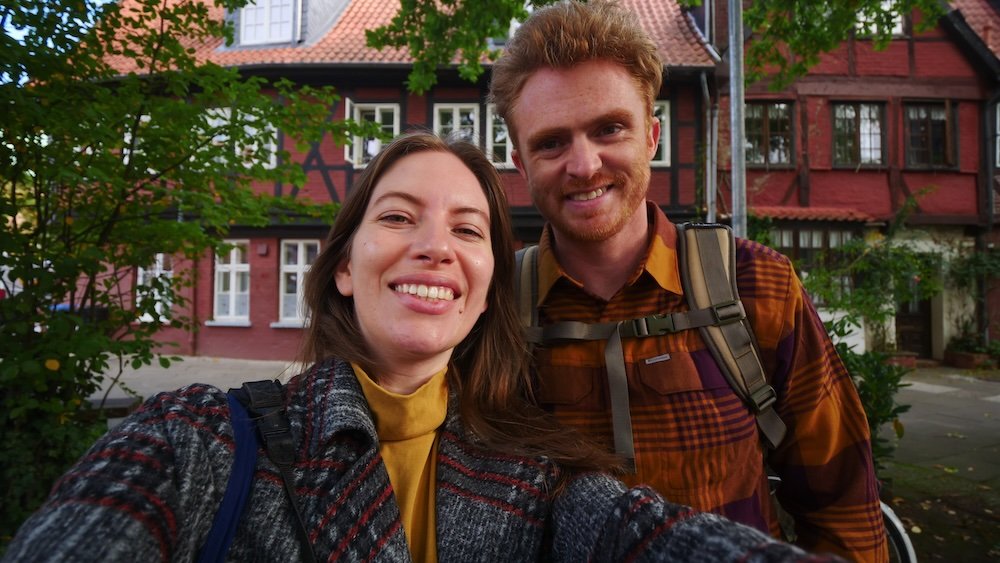
Ready to dive in? Let’s explore Lüneburg’s soul together, starting with the top things to do that define this timeless Hanseatic town.
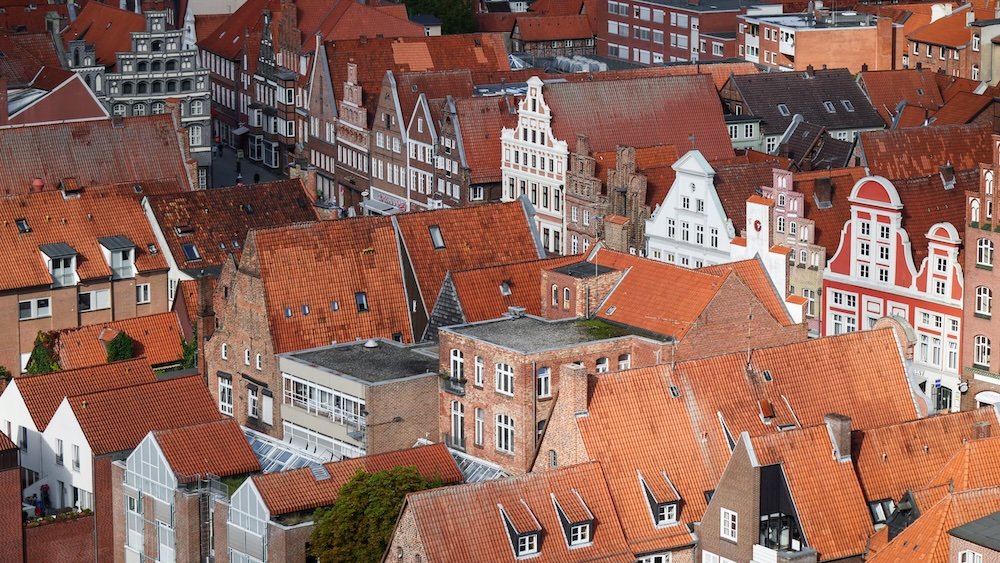
Top 10 Things To Do in Lüneburg, Germany For Visitors
Lüneburg dazzles with a blend of medieval charm, red-brick Gothic architecture, and vibrant university life. Below are 10 essential things to do. Get ready for scenic overlooks, bustling squares, and hearty local flavors.
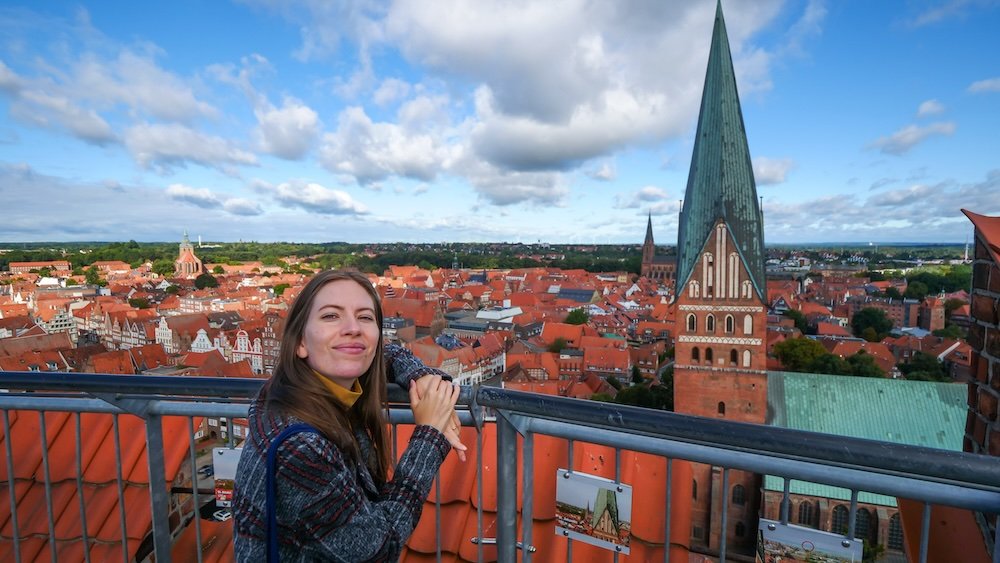
1) Views from the Water Tower
Rising above the red rooftops, the Lüneburg Water Tower promises an unbeatable panorama. It’s a handsome brick structure perched near the old quarter, with a spiral staircase or elevator leading to the observation deck. Once you step out, the city’s terracotta roofs unfold in all directions, dotted by steeples and the meandering Ilmenau. Early mornings deliver soft light painting the skyline, while sunsets cast everything in a golden glow. A small museum inside explains the tower’s historical role in supplying water to locals. Plan at least half an hour up top to savor the calm hush and fresh breezes.
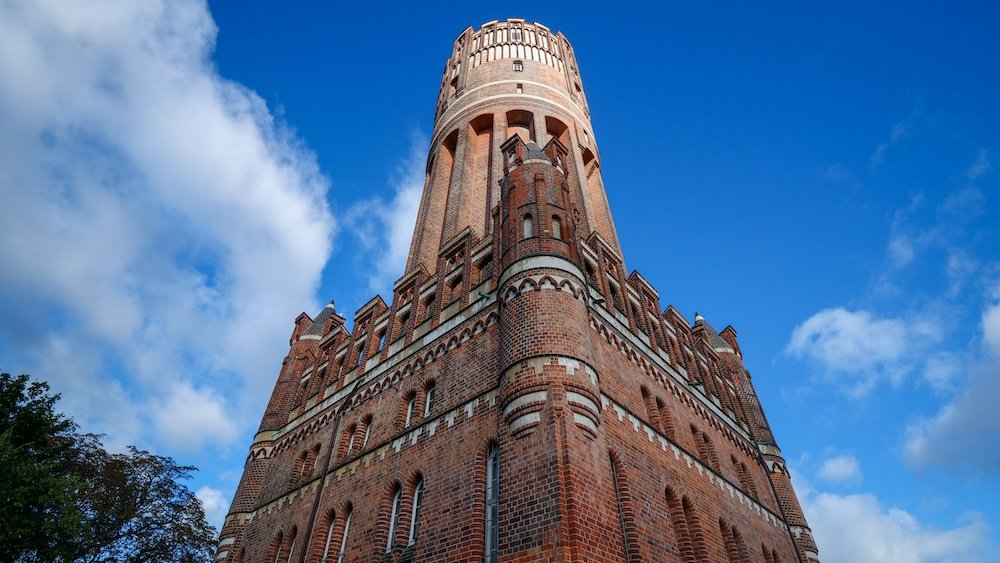
- Check the posted visiting hours—some evenings might open later for sunset watchers.
- Tickets are affordable, often sold at a kiosk by the entrance.
- Small signboards identify notable landmarks visible from the deck.
Tip: Bring a light jacket—even on sunny days, wind at the top can feel brisk.
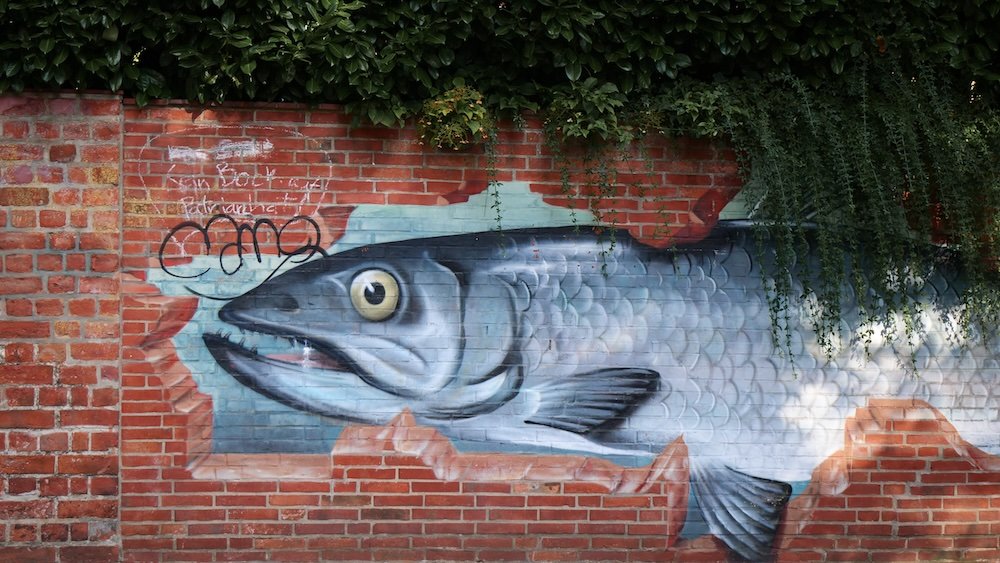
2) Platz am Sande
Platz am Sande is Lüneburg’s iconic square, framed by historic gabled houses sporting ornate facades. Centuries ago, merchants traded goods here, capitalizing on Lüneburg’s salt fortune. The cobbled expanse often hosts markets or local events, injecting color and life into the medieval setting. Cafés and bakeries line the edges—ideal for people-watching over a cappuccino or sampling a warm pastry. Vibrant streetlamps illuminate the space at night, revealing a warm glow on ancient bricks. Spend time strolling, snapping photos, and admiring each building’s unique architectural flair.
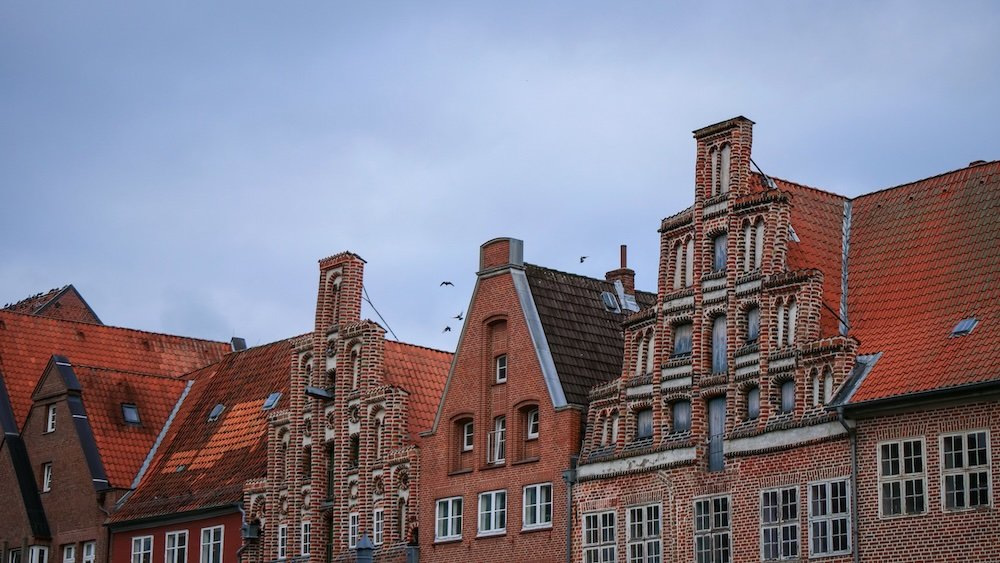
- Some shops tucked behind facades sell artisanal chocolates or crafts.
- Public benches provide rest if you’ve been exploring all day.
- Evening visits capture fewer crowds, letting you soak up the old-town mystique.
Tip: Look for small plaques on buildings—some describe the structure’s history or past occupants.
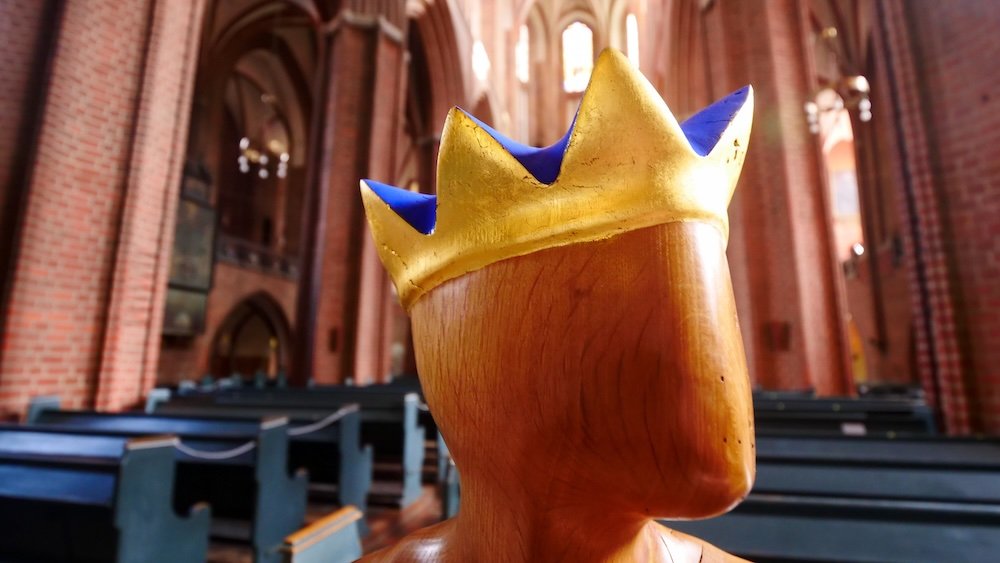
3) Basilica of St. Nikolai
St. Nikolai is a striking basilica known for its towering interior and soaring Gothic lines. Built during Lüneburg’s heyday, it once symbolized the city’s wealth from salt trade. Stepping inside, you’ll see lofty pillars, a high altar, and stained-glass windows that shimmer on sunny days. The organ’s deep tones often resonate during weekend concerts, filling the space with ethereal melodies. Peaceful corners let you sit quietly, absorbing centuries of devotion etched into every beam. Its red-brick facade outside stands as a testament to the region’s building style.
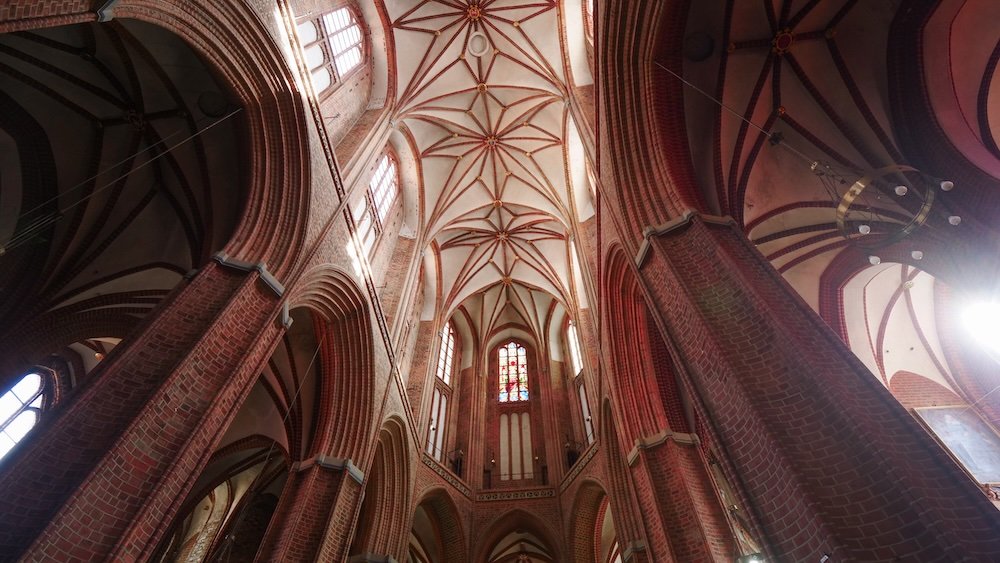
- Modest attire is appreciated—German churches encourage respectful dress.
- Guided tours sometimes reveal hidden crypts or lesser-known chapels.
- Donations support maintenance and occasional restoration projects.
Tip: Check local listings for organ recitals—they’re usually free or very affordable, adding an auditory treat to your visit.
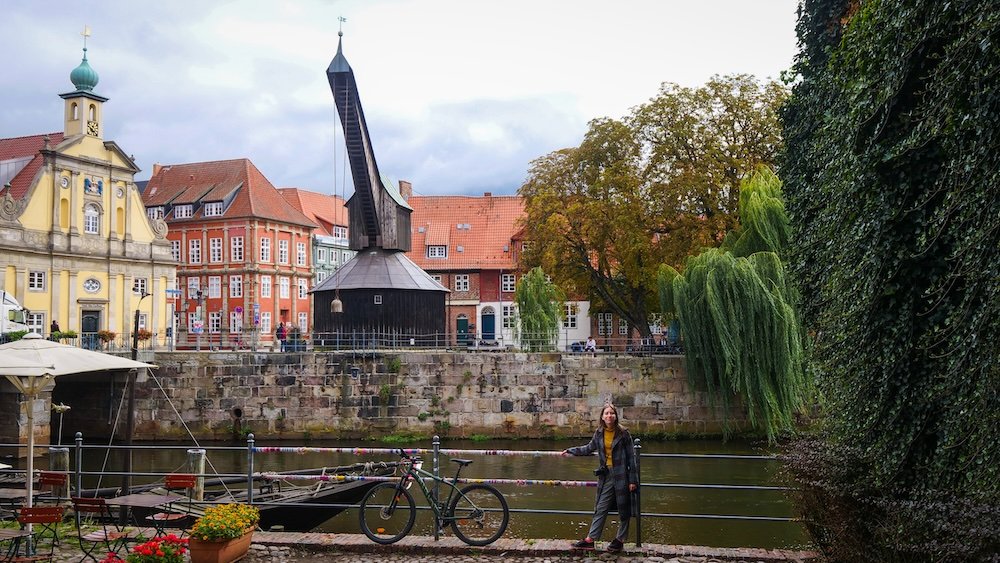
4) Ilmenau River and the Old Crane
The Ilmenau River gently laps against Lüneburg’s old town, offering scenic walks and a chance to see the famous Alter Kran (Old Crane). This medieval crane once hoisted heavy salt barrels onto ships, reflecting the city’s salt-rich legacy. Today, the crane stands dormant but iconic, a piece of living history by the water’s edge. Sit on a bench, watch ducks glide by, and imagine cargo-laden barges plying these waters centuries ago. The nearby half-timbered buildings look postcard-perfect, especially in late afternoon sun. Consider bringing a small snack or coffee to relish the slow pace by the riverside.
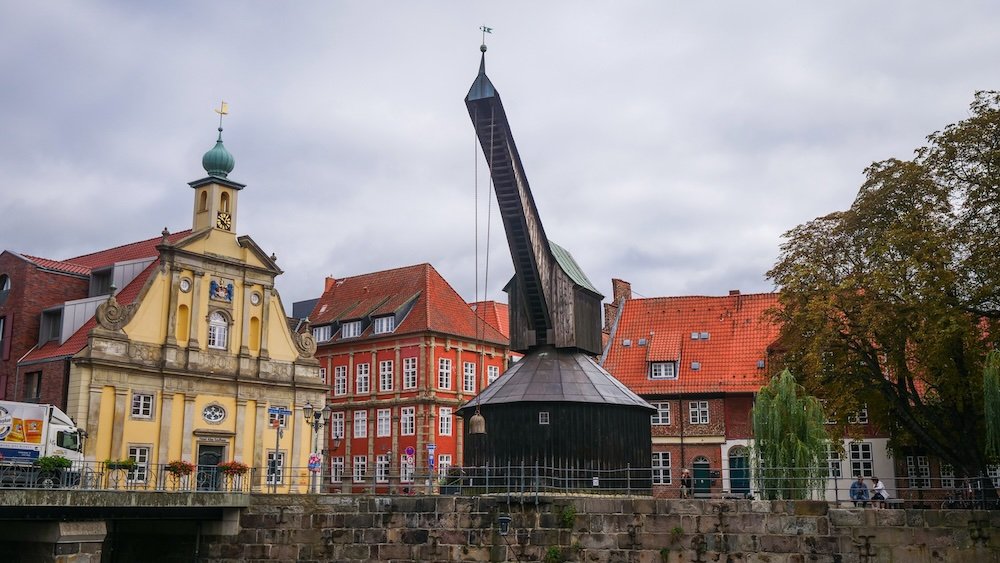
- Bridges near the crane offer vantage points for photography.
- Some local restaurants feature riverfront terraces with gorgeous views.
- Info plaques explain how the crane’s wooden gears and pulleys functioned.
Tip: Cross over to the opposite bank for a symmetrical shot capturing both the crane and old facades.
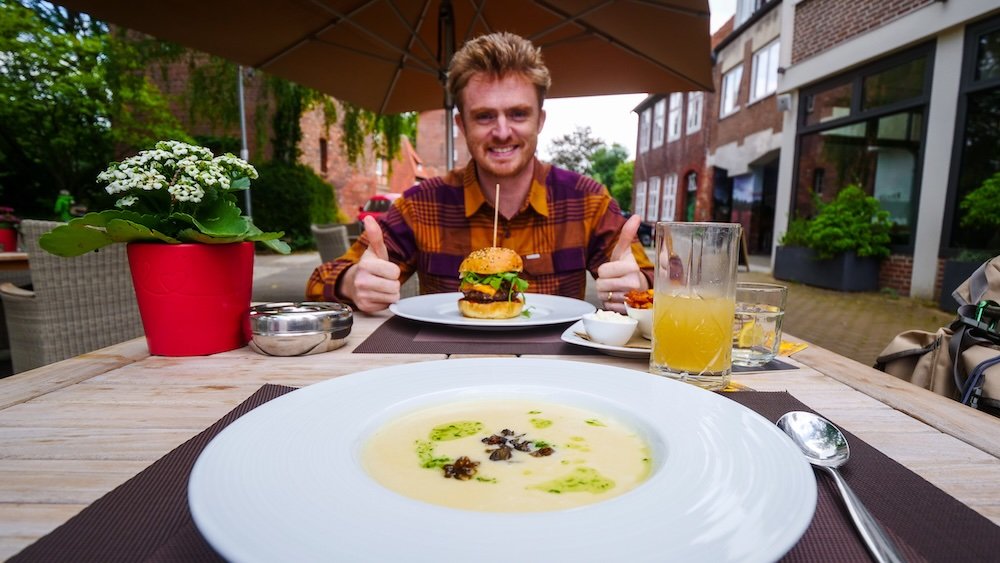
5) Lunch at Friedas am Wasserturm
Sitting right by the water tower, Friedas am Wasserturm is a delightful lunch spot blending modern German eats with homey warmth. Interiors embrace a minimalist design, but the menu brims with hearty fare like schnitzel, fresh salads, or creative daily specials. In summer, outside tables let you dine with the tower looming behind as a scenic backdrop. Portions are generous, staff friendly, and local beers or wines pair well with the food. The vibe is relaxed—lingering over dessert feels normal, not rushed. Perfect for refueling post-sightseeing or kicking off an afternoon stroll around the old town.
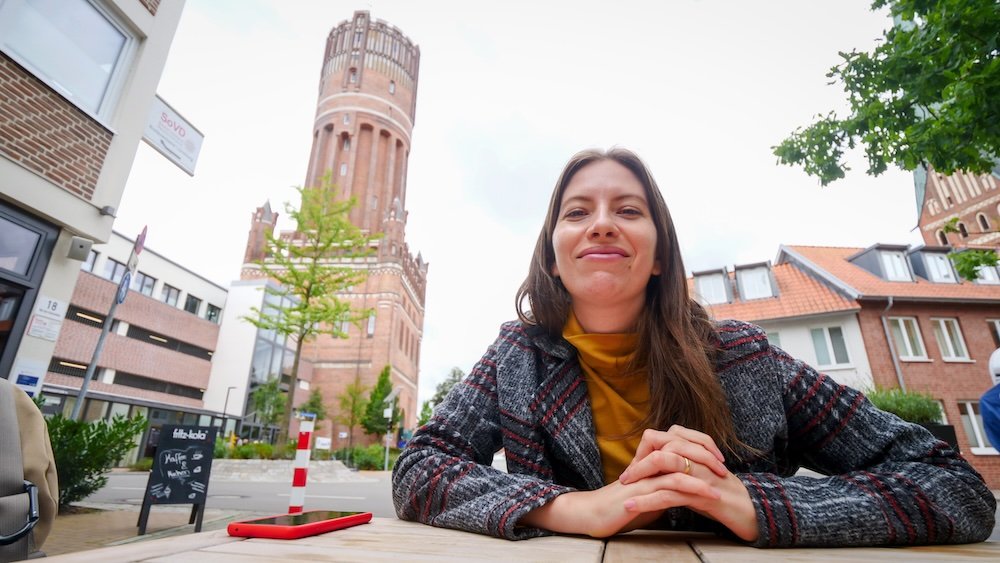
- Try their seasonal soup or stew if you see it on the blackboard.
- Homemade cakes or pastries often appear on the dessert menu.
- Expect fair prices, slightly below bigger-city rates.
Tip: Ask for the daily special—it’s typically fresh, showcasing local ingredients from the region.
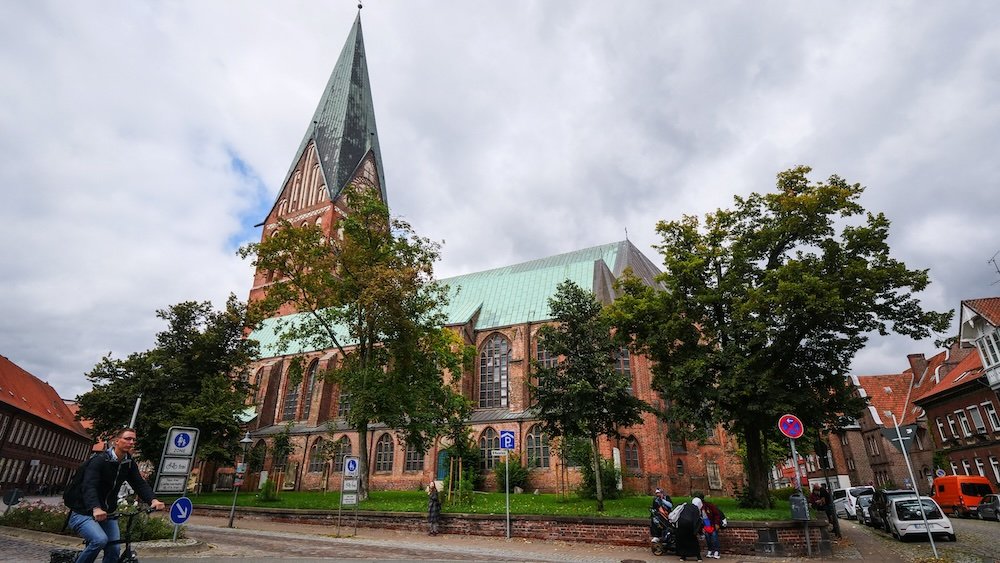
6) St John’s Church
One of Lüneburg’s oldest structures, St John’s Church features a lofty spire that pierces the skyline. Step inside to witness medieval fresco fragments and a calm interior lit by stained glass. The organ, perched above, often hosts recitals or Sunday services. Volunteers might offer insights into the church’s storied past, from medieval expansions to post-war restorations. A sense of awe arises as you stroll the pews, imagining generations worshiping under these arches. Outside, the churchyard sometimes hosts quiet fairs or local gatherings.
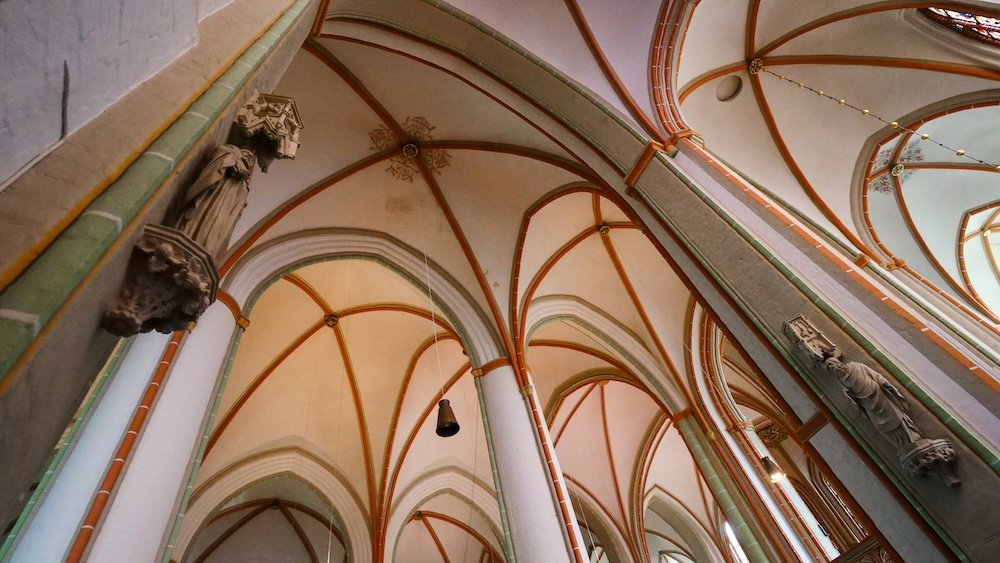
- Look up—intricate woodwork or mosaic details can be hidden above standard sight lines.
- Photography rules vary; watch for signs or ask staff politely.
- The tower is occasionally open for climbs, though times are limited.
Tip: Listen for live organ practice—some afternoons, you might hear gentle chords drifting through the nave.
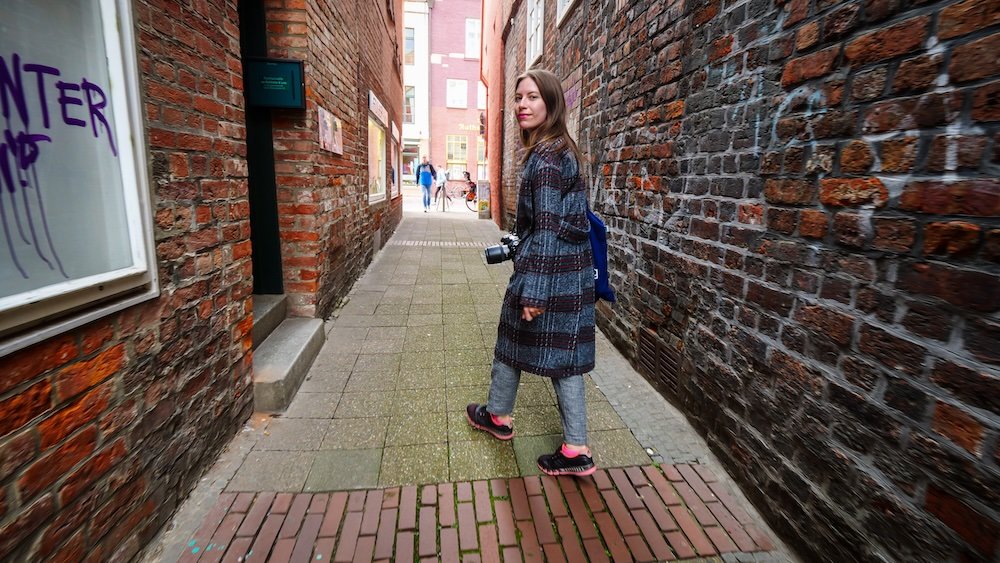
7) Walking Tour of the Old Town
A walking tour unravels Lüneburg’s salt heritage, winding you through half-timbered lanes and storied squares. Guides often discuss how salt once financed the city’s grandeur, paying for majestic churches and elaborate merchant houses. Spot hidden courtyards, intriguing door knockers, and ornate brickwork. The route might pass the old Latin School, local brewpubs, or spots where centuries-old salt bores still linger. Interspersed with fun tales—like how a leaning building got nicknamed due to shifting ground—these tours bring historical context alive. After an hour or two, you’ll see the city with fresh eyes.
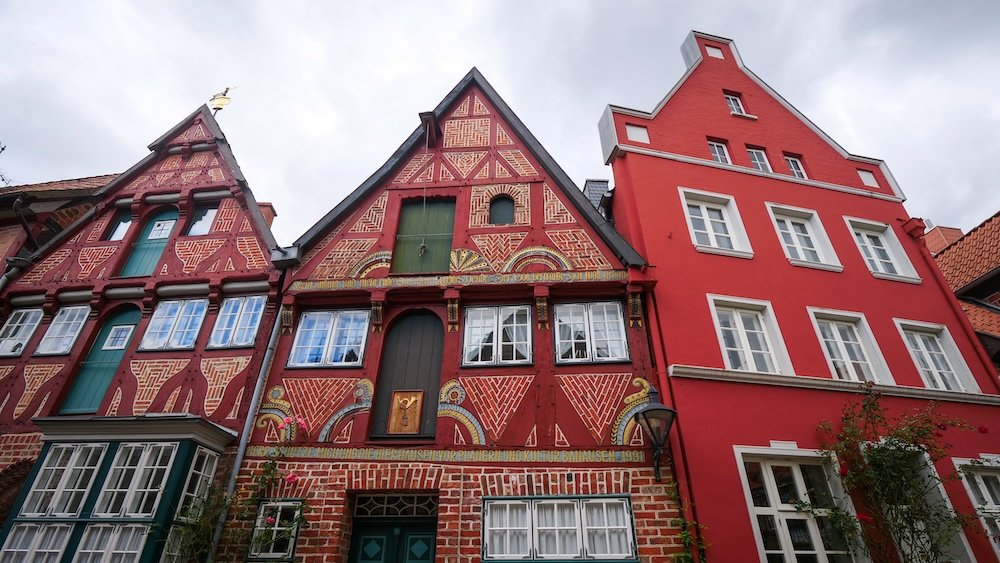
- Group tours gather near key landmarks, but private tours adapt to your timing.
- Some highlight the city’s role in the Hanseatic League.
- The pace is gentle, good for families or older travelers.
Tip: Ask about photo vantage points—guides often know hidden corners for top-notch angles of spires or facades.
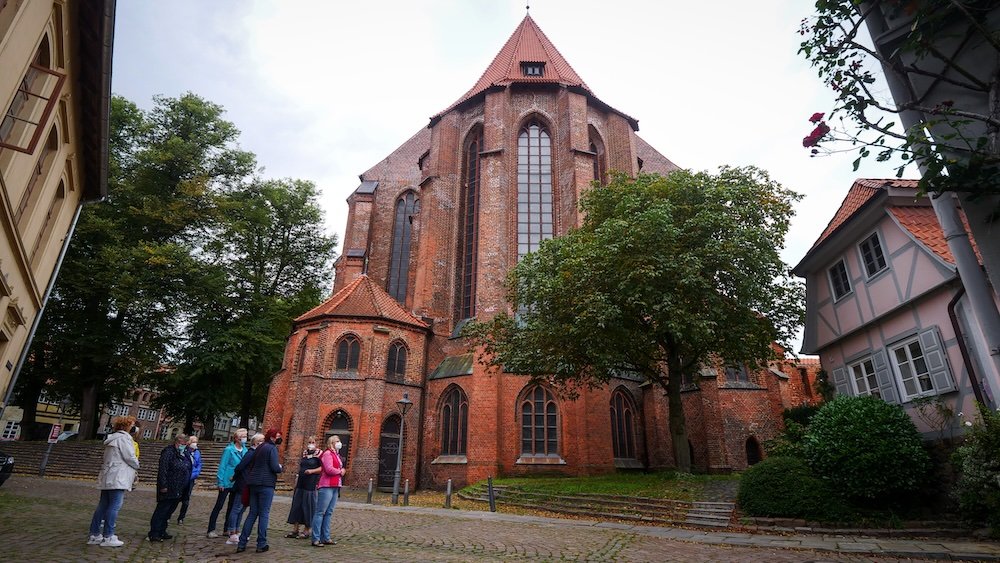
8) St Michael’s Church
Smaller than some peers, St Michael’s Church is nonetheless steeped in quiet spirituality. It was once part of a medieval monastery, and the simple interior exudes reflective charm. Stone arches, minimal décor, and flickering candles create a calming aura. Outside, discover remnants of cloister walls, a nod to monastic life centuries prior. Occasional choral concerts utilize the church’s acoustic clarity. If you relish peaceful corners amid tourist bustle, this hidden gem fits the bill.
- Free entry, though donations help keep the building in good shape.
- Rare manuscripts or religious artifacts sometimes rotate on display.
- The courtyard behind can be lush with greenery in summer.
Tip: Pause for a short prayer or moment of silence—even non-religious visitors appreciate the soothing calm.
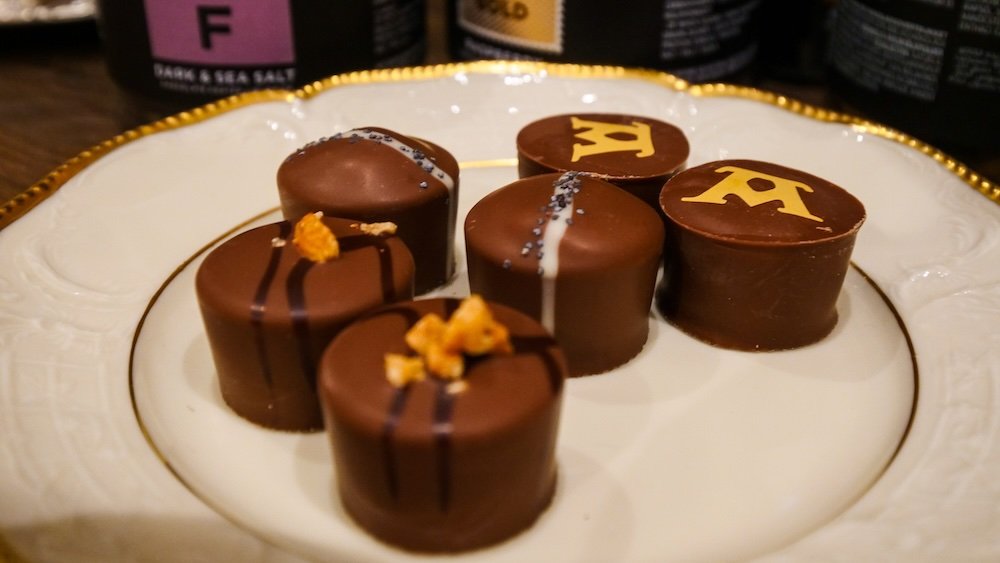
9) Chocolates at Schokothek
Schokothek is a paradise for chocolate lovers, showcasing artisanal truffles, bars, and cocoa-inspired treats. The aroma hits you instantly—rich, heady, and impossible to resist. Glass cases display rows of pralines, from dark chocolate with chili to creamy milk morsels. Staff offer samples or help you craft a mixed box. If you need a jolt, try their hot chocolate—velvety and indulgent. Perfect for a sweet respite between sightseeing jaunts.
- Specialty items change seasonally—look for limited editions.
- Gift boxes serve as an ideal souvenir for friends or family back home.
- Expect moderate prices reflecting handmade quality.
Tip: Indulge in a single truffle on the spot—some flavors sell out faster later in the day.

10) German Pub Food at Krone
Tucked near the old quarter, Krone offers a cozy setting to savor German classics. The wooden tables, dim lighting, and friendly servers create a warm tavern atmosphere. Schnitzel, bratwurst, or perhaps a pork knuckle feature alongside fresh local beer. Portions can be hefty, so come hungry. The menu often rotates to showcase seasonal produce—think hearty stews in winter or crisp salads in warmer months. Lively chatter from both locals and visitors underscores an authentic vibe.
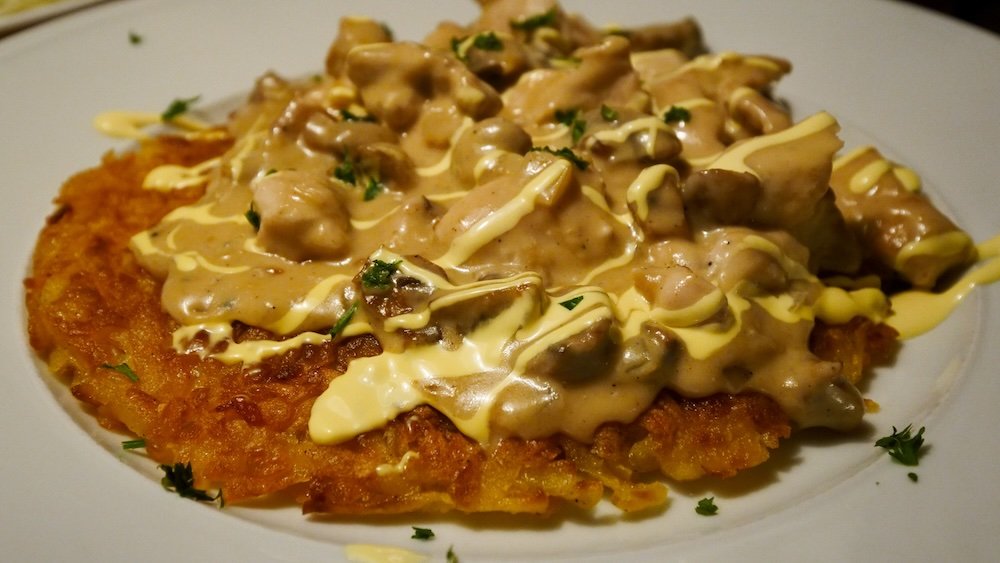
- Vegetarian options may be limited, but usually at least one dish exists.
- Reservations can help if you’re dining in peak evening hours.
- Homemade sauces, especially beer gravy, are must-tries.
Tip: Ask about daily specials—they often blend seasonal flavors with old-school German comfort.
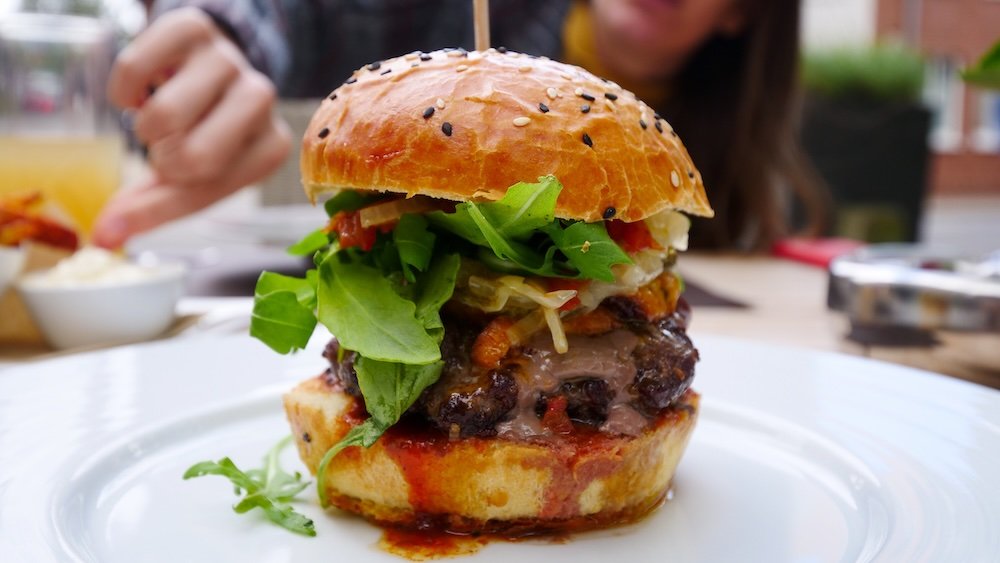
What To Eat and Drink in Lüneburg, Germany
Lüneburg’s cuisine draws on both Lower Saxony traditions and modern influences. Expect hearty fare, fresh local produce, and nods to the city’s salt-trading heritage. Below, we dive into top things to do for your taste buds, from savory mains to sweet treats and local beverages.
Regional Specialties
Heidekartoffeln (Heath potatoes) star in many rustic dishes, reflecting the area’s farmland. They’re earthy, slightly sweet, and pair well with roast meats or fish. Meanwhile, Grünkohl (kale) in winter is a beloved comfort meal, slow-cooked with smoked sausage. In Lüneburg’s old inns, you might see Stippgrütze (a type of grain pudding) or rye bread with thick slices of local ham. These robust staples keep you warm in cooler months. If you visit between autumn and winter, expect hearty plates exuding that rural, down-home vibe.
- Some restaurants highlight “regional produce” on the menu, guaranteeing fresh authenticity.
- Pair kale dishes with a strong local beer for extra warmth.
- Hearty soups or stews frequently appear as lunch specials.
Tip: Try a local “Heidschnucken” lamb dish—Heidschnucken are the region’s moorland sheep with distinct flavor.
Bakery and Dessert Culture
Germany, and Lüneburg in particular, excels at pastries and breads. Stroll the old quarter to find small Backstuben (bakeries) presenting pretzels, butter croissants, or seeded rolls. Sweets vary from jam-filled donuts to fruit-laden cakes. In the afternoons, the tradition of Kaffee und Kuchen (coffee and cake) blooms in quaint cafés. Bienenstich (bee sting cake) or Schwarzwälder Kirschtorte (Black Forest cake) might tempt you. As an after-lunch treat, it’s a calm tradition that merges sweet indulgence with friendly conversation.
- Look for daily “cake of the day” signs—fresh from the oven.
- Many places offer lactose-free or alternative-milk coffees.
- Expect lines at popular spots on weekend afternoons.
Tip: Show up earlier in the day if you want the best pastry selection—some sell out by mid-afternoon.
Beer, Wine, and Local Drinks
Although not as famed as Bavaria for beer, northern Germany still cherishes local brews. Bars in Lüneburg might stock craft or regional labels beyond the standard pilsner. Meanwhile, German wines—Riesling or Spätburgunder—grace wine lists for those preferring grapes over hops. If you’re feeling adventurous, Luhe-Kräuter is a local herbal liqueur produced nearby, sipped as a digestif. For non-alcoholic refreshment, Apfelschorle (apple juice with sparkling water) is a tangy, beloved staple. Each sip reveals a side of Germany’s broader beverage tapestry.
- Some taverns rotate seasonal beers or festival brews.
- In autumn, Federweißer (half-fermented grape must) might appear for a sweet fizz.
- Beer gardens pop up in warm months near the river or city squares.
Tip: Ask bartenders for local beer recs—some hidden microbreweries exist within short distances.
Street Food and Markets
Though smaller than big cities, Lüneburg still has weekly markets showcasing produce, cheeses, honey, and prepared snacks. A brötchen stuffed with fish or salami can be a quick midday fix. During festivals, stands selling bratwursts or crepes gather around city squares. Christmas markets transform the atmosphere in winter with mulled wine (Glühwein) and spiced treats. Wandering these stalls fosters a lively, communal feeling. Perfect if you crave socializing while sampling bite-sized German comfort foods.
- Try a warm crepe with Nutella at outdoor stalls.
- Fresh cheese or quark from local dairies pairs well with rye bread.
- Some seasonal produce stands highlight asparagus (Spargel) in spring or pumpkins in fall.
Tip: Check local event schedules—markets or festivals can coincide with your stay, amplifying your experience.
International Twists
Modern Lüneburg also welcomes global flavors—Italian trattorias, sushi bars, or Turkish doner shops. Students from the local university keep demand lively, so you’ll find more than just German classics. Eateries might serve fusion pizza or Asian-infused soups. If you’re here for a week, such variety helps break up hearty Teutonic meals. It’s a testament to Germany’s evolving culinary scene, bridging tradition with global tastes.
- Some fusion places incorporate local ingredients—like a pizza topped with local ham.
- Doner kebab stands can be a quick, cheap dinner.
- Vegetarian or vegan options appear in many new eateries.
Tip: Ask locals which pizzeria or Asian spot stands out—they often know hidden gems off the main drag.
In Lüneburg, each meal or snack ties you closer to the region’s identity. From the warm embrace of kale stews in winter to the sweet swirl of pastries in a friendly café, it’s about comfort and heritage. Pair this with a crisp beer or fruity Apfelschorle, and you’ve got the perfect gastronomic companion for your day of exploration. Taste the local staples and branch out to find modern twists—there’s room for both in this delightful, historically rich town.
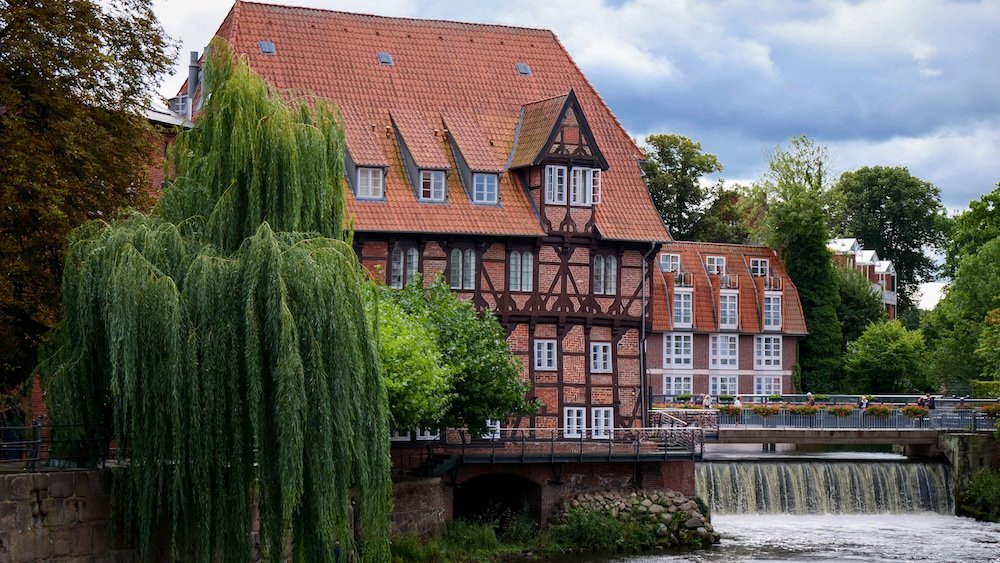
Tours For Visitors To Lüneburg, Germany (Approx. 600 Words)
Structured tours in Lüneburg simplify discovering the city with convenience. Whether you fancy salt-history revelations, meandering boat rides, or brewery outings, guided excursions reveal more than surface-level glimpses. Below, we break down the main tour categories so you can plan which aligns best with your things to do agenda.
1) Historical Walking Tours
Walking tours let you traverse cobblestone lanes with a guide who unpacks centuries-old anecdotes. They might focus on Lüneburg’s salt trade era, pointing out old salt storehouses or the saline well that once financed the city’s growth. Expect quick peeks into hidden courtyards, stories about leaning gabled rooftops, and tidbits on how the city navigated medieval alliances. The pace is usually gentle—plenty of photo ops guaranteed. Some guides wear period costumes, spicing up the storytelling. Perfect if you’re short on time but crave deeper context.
- Tours typically last 1–2 hours.
- Check if tours are in English or German—some operators provide multilingual sessions.
- Book in advance for popular weekend slots.
Tip: Ask for a custom route if you have special interests, like architecture or local folklore.
2) Salt Museum and Thematic Tours
In a city nicknamed the “City of Salt,” a Salt Museum tour is a no-brainer. Guides bring ancient salt extraction methods to life, showing you tools, historical records, and how salt shaped Lüneburg’s fortunes. Some extended tours incorporate walking to old salt wells or demonstrations of brine boiling (though purely for show). It’s a thematic deep dive into how a single mineral catapulted a medieval town into wealth. Perfect for history buffs or families fascinated by old trades.
- The museum’s interactive exhibits appeal to kids, bridging education with fun.
- Plan around an hour for the museum alone; thematic add-ons might take extra time.
- Souvenir shops sometimes sell specialty salt packs—unique gift idea.
Tip: Check for salt-boiling demos—they occur at specific times, presenting a rare look at old processes.
3) Boat Trips on the Ilmenau
Boat tours across the Ilmenau River or small canal routes present a gentle vantage of Lüneburg’s waterside. Wooden or modern vessels putter along, revealing old cranes, half-timbered warehouses, and reflective waters. Tour guides typically narrate how trade and shipping once buzzed along these quiet channels. Sunset cruises can be magical, with evening light dancing on the water. Some operators serve drinks or snacks, letting you unwind as the boat glides by. It’s a tranquil respite from land-based exploring.
- Seats might fill quickly on sunny weekends, so arrive early or book online.
- Wear light layers—breezes pick up on open-deck boats.
- Check if commentary is in English or only German.
Tip: Combine your boat tour with a short stroll to the Old Crane afterwards to link the water’s story with the city’s salt heritage.
4) Cycling and Nature Excursions
For active travelers, cycling tours reveal the scenic outskirts: farmland, quiet hamlets, or gentle forest trails. Rental bikes are widely available, and guided routes ensure you won’t get lost. Guides highlight local flora, random historical markers, or vantage points across the Lüneburg Heath. Bird-watchers or nature enthusiasts relish this slower approach, taking in fresh air and easy pedaling. Whether half-day or full-day, it’s a refreshing break from city squares.
- Some tours include snack stops or picnic lunches in scenic spots.
- Ask about e-bikes if you’d prefer minimal effort on uphill stretches.
- Helmets might not be legally mandated, but strongly recommended.
Tip: Check seasonal changes—the Lüneburg Heath blooms purple in late summer, an extra color treat.
5) Brewery Tours
Beer lovers, rejoice: a handful of brewery tours or tasting sessions highlight Lüneburg’s old brewing tradition. You’ll see copper kettles, grain mashing areas, and sample craft or classic German brews. Some tours dig into how the city’s salt trade impacted local beer flavors or brand expansions. Brewmasters might chat about hop choices or fermentation secrets, bridging tradition and modern techniques. End with a fresh pint or even a small dinner pairing. It’s a social, flavorful dive into German pub culture.
- Some breweries only host tours on select days—book in advance.
- Tastings can feature 3–6 types of beers.
- Non-drinkers or kids might enjoy the behind-the-scenes factory aspects without the sampling.
Tip: Ask about limited seasonal brews—some smaller batches vanish once tapped out.
Practical Tips for Booking
- Schedules: High season weekends fill fast, so plan or risk last-minute disappointment.
- Group Size: Smaller tours offer personalized interaction, bigger tours can feel rushed.
- Language: If you’re not fluent in German, confirm English commentary availability.
- Weather: Outdoor tours might proceed in drizzle—pack an umbrella or jacket.
- Budget: Some free walking tours exist (tip-based), while specialized ones cost more.
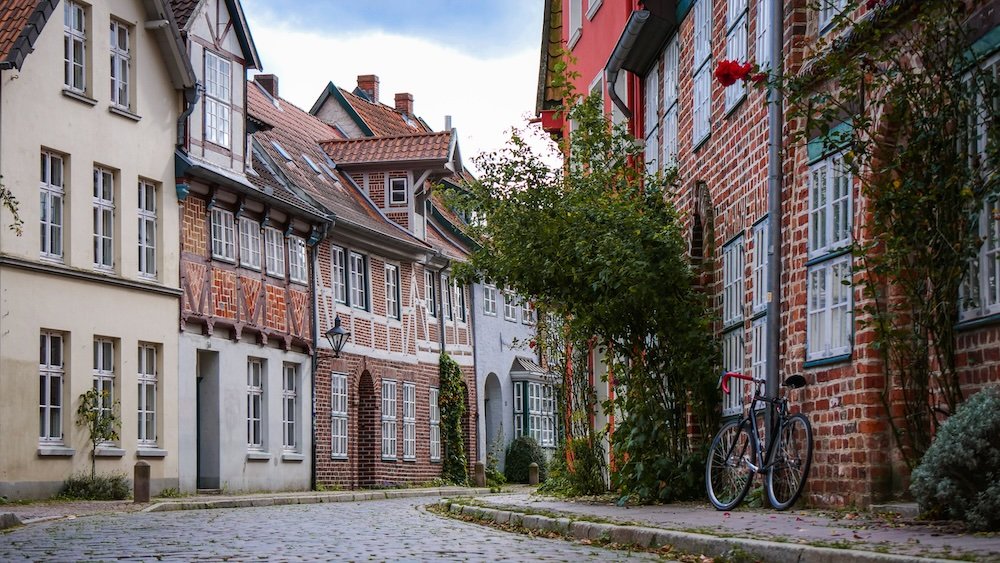
Lüneburg Accommodations Guide: Hotels, Guesthouses and Hostels
Finding the right base in Lüneburg can shape how easily you explore things to do around its old-town core. From boutique hotels behind medieval facades to simpler hostels by the station, there’s an option for every budget. Let’s examine the lodging types so you can rest comfortably amid this historic city’s charm.
1) Boutique and Heritage Hotels
If you want a memorable blend of modern amenities and centuries-old architecture, boutique hotels fit perfectly. They often occupy renovated medieval or Baroque buildings, with exposed beams, antique furniture, and occasional courtyard views. Expect premium bedding, unique room layouts, and personal touches like homemade jams at breakfast. Being small, they fill fast on weekends or during festivals—reserve early. Staff can usually assist with dinner reservations, transport, or insider tips. Pricier than standard chains, but the atmosphere and location near major sights justify it for many travelers.
- Some boutique spots feature on-site spas or saunas.
- The older structure might mean no elevator—check if stairs are okay.
- Breakfast is usually included, offering local breads and cheeses.
Tip: Look for special packages—some hotels bundle a free walking tour or discount coupons for local attractions.
2) Mid-Range Hotels and Pensionen
Lüneburg’s mid-range sector typically comprises small hotels or pensionen (guesthouses) around the old town’s edges. Rooms are simple yet comfortable, with private bathrooms and modest décor. Often family-run, these spots exude warmth, from personal greeting at check-in to hearty breakfasts. You might find on-site parking—useful if you’re renting a car to explore surrounding regions. Locations vary: some might be 10 minutes on foot from the city center, which can mean quieter nights. Rates stay moderate, delivering good value for travelers wanting convenience minus the boutique price tag.
- Check if reception has limited hours—some pensionen close check-in earlier in the evening.
- Ask about a courtyard or small garden—perfect for a morning coffee.
- Best deals appear midweek, especially outside peak tourist seasons.
Tip: Verify if they accept card payments—smaller family-run places might prefer cash or limited card types.
3) Hostels and Budget Stays
Backpackers or budget-conscious travelers may opt for hostels or budget hotels near the train station or just outside the core. Dorm rooms keep costs low, while private rooms remain cheaper than boutique hotels. Communal lounges foster conversation with fellow explorers, plus you can glean tips from travelers who arrived earlier. Some hostels do a simple breakfast spread, or partner with local cafés for meal deals. They’re typically safe, though bring a lock for personal lockers. Expect a lively vibe in communal kitchens or lounge areas.
- Confirm if bedding is provided or if you need your own sheets.
- Earplugs help if you’re in a shared dorm (snorers exist everywhere).
- Some hostels arrange group outings or pub crawls.
Tip: Check bed availability—Lüneburg is smaller, so popular dates see hostels fill quickly, especially in summer.
4) Apartment Rentals
Apartments (via booking sites or local agencies) suit travelers wanting homey independence. Cooking your own meals with local produce can be a highlight—especially after hitting farmers’ markets. Some apartments nest in charming old quarter houses, letting you feel part of daily routines. You’ll likely have more space than a typical hotel room, plus a living area for relaxed evenings. Just note that many older buildings lack elevators, so lugging luggage up wooden stairs might be required. Also, check parking or public transport proximity if you plan day trips.
- Ideal for families or small groups—splitting costs lowers per-person rates.
- Carefully read check-in instructions—often a key box or meeting time arrangement.
- Extended stays might yield weekly discounts.
Tip: Look for places with washers if you’re traveling longer and want fresh clothes.
5) Factors to Consider
- Location: Closer to the Old Town means easy wandering, but higher noise or cost.
- Season: High season (summer, Christmas markets) sees quick booking—reserve earlier.
- Amenities: Do you need parking, an in-house restaurant, or strong Wi-Fi for remote work?
- Breakfast: Many accommodations include it, but confirm if it’s free or an extra charge.
- Reviews: Online feedback clarifies things like cleanliness, staff helpfulness, or surprise fees.
Our Travel Video From Hamburg, Germany on Samuel and Audrey YouTube channel: Nomadic Samuel + That Backpacker as hosts
Day Trips From Lüneburg, Germany
While Lüneburg offers plenty of things to do, stepping beyond city limits reveals even more corners of Lower Saxony’s rich landscape. Train connections and short drives link you to historic towns, scenic heaths, and lively Hamburg vibes. Below are prime day trips that broaden your vantage without venturing too far.
1) Hamburg
A swift 30–45-minute train ride whisks you to Hamburg, Germany’s second-largest city. The contrast is striking: Lüneburg’s medieval calm transitions to Hamburg’s sprawling harbor, modern architecture, and boisterous nightlife. Stroll around the Speicherstadt, a UNESCO warehouse district with canals weaving under ornate bridges. Check out the Elbphilharmonie concert hall’s observation deck for sweeping port views. If you have time, roam the vibrant St. Pauli district or sample fish at the Landungsbrücken piers. Hamburg merges maritime heritage with urban energy.
- Trains from Lüneburg to Hamburg run frequently from early morning till late.
- A Hamburg Card might help if you plan to use public transport or see multiple attractions.
- Weekends can see big city crowds—arrive earlier for calmer exploration.
Tip: Check the Fish Market on Sunday morning—a lively tradition near the Elbe.
2) Lüneburger Heide (Lüneburg Heath)
The Lüneburg Heath is famed for its sweeping purple heather blooms (usually mid-August to September). This protected nature park lies an easy bus or car journey away. Rolling heather fields, pine forests, and rustic villages define the region’s charm. Many paths suit leisurely walks, horse rides, or bike tours. Traditional villages might offer local honey or straw-roofed farmhouses. If you prefer quiet nature, the Heath saturates your senses with color and fresh air.
- Some areas prohibit cars, maintaining a serene environment—park outside and walk in.
- Check for designated viewing vantage points for prime heather photos.
- Late summer is peak bloom, though it’s still scenic year-round.
Tip: Bring bug spray—moors can harbor mosquitoes in warm months.
3) Winsen (Luhe) Castle
About 20 km from Lüneburg, Winsen boasts a small castle with a moat, now housing administrative offices and occasional exhibits. The adjacent old town features half-timbered buildings and a laid-back marketplace. You can easily pair a castle visit with a coffee break in a local café. The castle courtyard sometimes hosts events or open-air performances. It’s a low-key, historical outing ideal for half a day. If you love quiet corners off the main tourist track, Winsen is charming.
- Buses or regional trains from Lüneburg make it a short commute.
- The castle’s tower might open for limited tours—ask at local tourist info.
- Surrounding parks encourage picnics in pleasant weather.
Tip: Combine with a stroll along the Luhe Riverbank—scenic and peaceful.
4) Uelzen: Hundertwasser Station
Uelzen sits a short train hop away, famed for its Hundertwasser Station reimagined by Austrian artist Friedensreich Hundertwasser. Colors, organic shapes, and whimsical mosaics transform a once-standard station into a cheerful masterpiece. Outside, Uelzen’s old town has quaint shops, plus a weekly market. The station alone can captivate design fans for an hour, snapping photos of curvy pillars or playful tile patterns. If you yearn for an easy, artsy diversion, it’s a unique highlight. A gentle walk around the city center completes a relaxed day.
- The station building has small references explaining Hundertwasser’s concepts.
- Some city walking tours start near the station.
- Train frequency from Lüneburg is comfortable for a half-day loop.
Tip: Plan your train times—that station itself can be your main attraction, so ensure you have enough dwell time to explore.
5) Heide Park or Serengeti Park
Families or thrill-seekers can dart off to Heide Park (in Soltau) or Serengeti Park (in Hodenhagen). Heide Park is a major theme park with roller coasters, rides, and themed zones—adrenaline for all ages. Meanwhile, Serengeti Park merges safari drives with amusement rides, letting you spot giraffes or zebras up close. Both are about an hour’s drive or so from Lüneburg, making them feasible day outings. Perfect if you crave a break from historical architecture. Return in the evening with kids still buzzing about roller coasters or lion sightings.
- Tickets might be cheaper online, plus you skip some queues.
- Both parks see bigger crowds on weekends or school holidays.
- Car travel is simplest, though some bus tours exist from major cities.
Tip: Arrive when gates open—you’ll tackle top rides or safari routes before queues balloon.
General Day Trip Tips
- Transport: Check local bus or train timetables in advance—service might be limited on Sundays.
- Timing: Start early to maximize your day, especially for bigger destinations like Hamburg.
- Weather: German climates can shift quickly—pack an umbrella or layer up.
- Snacks: Rural or smaller towns might have fewer midday dining options, so plan your lunch location.
- Language: Basic German helps in smaller villages, though English is widely understood in tourist areas.
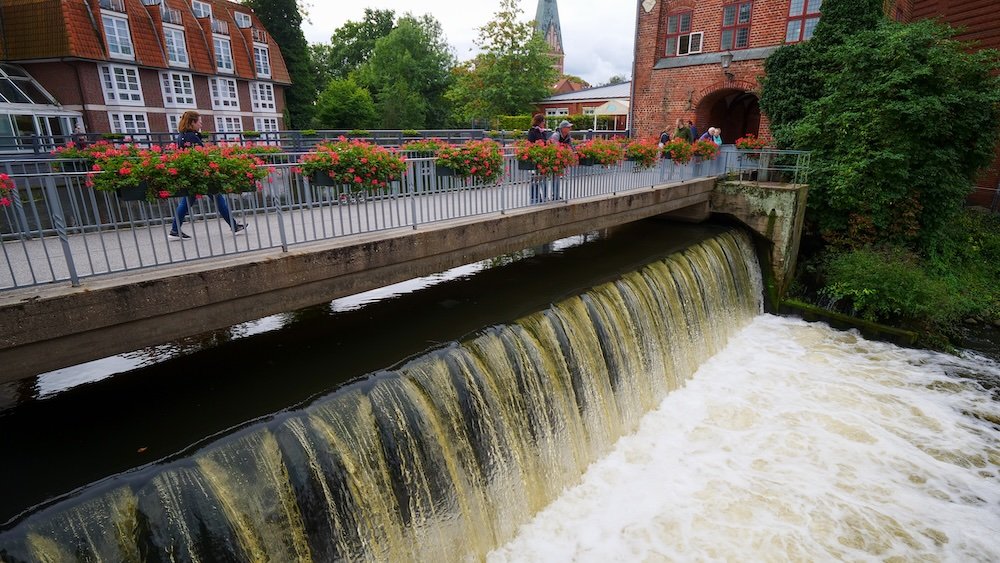
Lüneburg Transportation Guide
Lüneburg’s compact size makes local travel easy. But planning how to get around for day trips or within the old town remains crucial. This transportation guide highlights major modes—ensuring you smoothly reach all the things to do on your list.
1) Walking the Old Town
Foot traffic rules Lüneburg’s ancient streets. Cobblestones, half-timbered facades, and short distances encourage leisurely ambles. Most central attractions—Platz am Sande, St. Nikolai, the water tower—lie within a 15-minute stroll. This fosters spontaneous discoveries of charming squares or hidden alleyways. Just mind occasional uneven pavements, wearing comfy shoes for extended wanderings. Early mornings or evenings see fewer visitors, letting you soak up the medieval aura quietly.
- Some streets near the old salt quarter are partially pedestrianized.
- Pack a lightweight umbrella if forecasts hint at showers.
- Streetlamps illuminate well, but certain lanes remain dimmer at night.
Tip: Carry a small map from the tourist info center—GPS signals can fluctuate in narrow alleys.
2) Public Buses
Lüneburg’s bus network is modest but covers outlying neighborhoods and some outskirts. If your accommodation lies beyond walking range or if you’re visiting the salt museum’s suburbs, a bus ride might help. Single tickets are typically purchased onboard; some drivers speak limited English, so having small change or a German phrase helps. Check timetables at bus stops—frequency dips on weekends or after 8 p.m. Many locals rely on bikes instead, so buses aren’t packed usually.
- Day passes exist, offering unlimited rides if you plan multiple bus trips.
- Buses typically converge near the main train station or central square.
- Punctuality is decent, though occasional delays arise during rush hour or local events.
Tip: Ask your hotel which line runs closest—they might give a bus route map or personal recommendations.
3) Trains for Day Trips
For venturing beyond, Lüneburg Station links you to Hamburg, Uelzen, or other Lower Saxony towns. Regional trains run frequently, with ticket machines or counters at the station. If you’re day-tripping, consider a Niedersachsen Ticket offering group discounts across the region. Travel times to Hamburg hover around 30–45 minutes, making it an easy commute. If you prefer comfort, some ICE trains may stop here, though regional lines suffice for short hops.
- Always validate your date and route—some discounted tickets have time restrictions.
- Station signage is clear in German and English.
- Peak commute hours can see busier trains—aim for mid-morning if you want space.
Tip: Arrive early—the station can be small, but last-minute rush might cause you to miss a departing train.
4) Cycling
Lüneburg’s mild terrain suits cycling—rental shops or some hotels provide bikes. The old quarter has traffic-calmed streets, enabling carefree pedaling. To explore the Ilmenau River path or scenic outskirts, a bike is perfect. Watch for designated cycle lanes painted on roads or sidewalks. Helmets aren’t legally mandated for adults, but wearing one is wise. Biking not only saves transport cost but also immerses you in the local pace.
- Lock your bike carefully—public stands exist around key squares.
- Some scenic routes head toward Lüneburg Heath if you want a longer countryside spin.
- Make sure lights and brakes function well if you ride at dusk.
Tip: Use a local biking map—tourist info might have them for suggested scenic loops.
5) Taxis and Car Rentals
Taxis can be hailed near station stands or phoned for pick-up. Fares climb quickly for out-of-town journeys, but within Lüneburg’s compact zone it’s not too expensive. If you want day trips to rural spots or flexible scheduling, car rentals might be ideal. The town has small rental agencies near the station. Driving around the old center can be tricky—narrow streets, limited parking, and occasional one-way systems. Nonetheless, it suits travelers wanting a personal day trip without relying on train timetables.
- Parking garages exist but can fill on busy weekends.
- Watch out for environmental zones or potential local restrictions.
- Pre-book rentals in high season to secure vehicle availability.
Tip: Check if your hotel provides free or discounted parking, saving you the hassle of searching street spots.
Additional Tips
- Language: Some bus or train announcements might be German-only—basic phrases help.
- Timing: Sunday timetables are reduced, impacting bus or train frequency.
- Baggage: If exploring around checkout time, ask hotels about luggage storage.
- Season: Winter’s shorter days can affect how late trains run or how comfortable a bike ride might be.
- City Map: Free at tourist info or your hotel’s reception—handy for small alleyways.
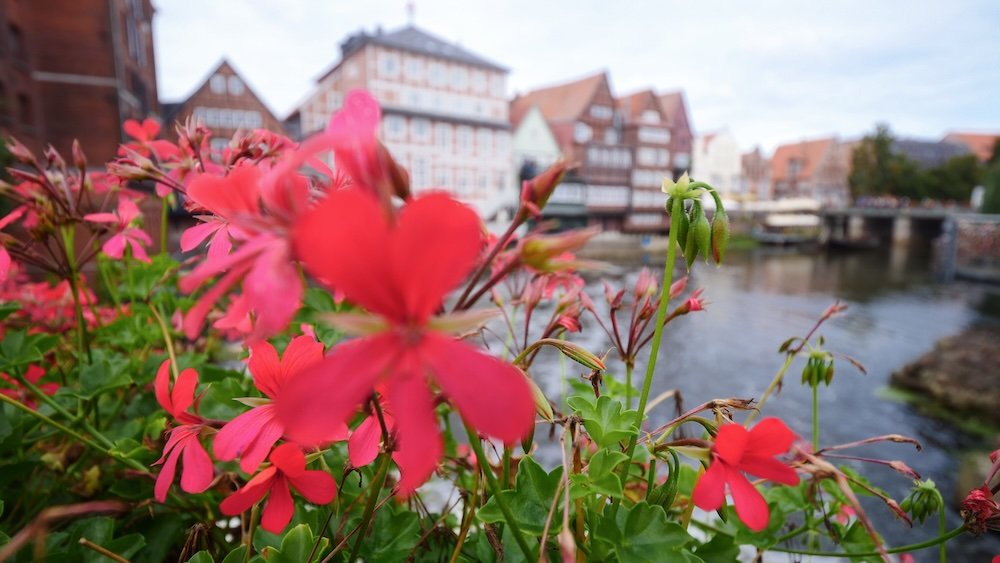
Lüneburg Travel Questions Answered: Practical Tips, Local Insights & Planning Advice
How many days do I really need in Lüneburg?
Honestly, two. You can “do” Lüneburg in a busy day trip, but it’ll feel rushed and you’ll end up skipping riverside strolls, slow café stops, and maybe a museum or church interior. With one full day and one night, you can climb the water tower, wander the old town, linger by the Ilmenau, and still have time for a chocolate stop or brewery visit. Add a third night if you want to fit in a proper day trip to Hamburg or the Lüneburg Heath without feeling like you’re sprinting.
Is Lüneburg worth visiting if I’m already going to Hamburg?
Yes. Hamburg is big, busy, and urban; Lüneburg feels like stepping into a compact medieval storybook. In under an hour by train you go from modern warehouses and a huge port to cobblestones, red-brick gables, quiet churches, and a slow-moving river. If you’re basing in Hamburg for a few days, Lüneburg is one of the easiest and most rewarding escapes: less stress, more atmosphere, and a very different side of northern Germany.
What’s the best time of year to visit Lüneburg for weather and atmosphere?
“Shoulder season” is your friend. Late April to June and September to early October usually bring mild temperatures, longer daylight, and fewer crowds than peak summer. July–August are warm and lively, but you’ll pay a bit more for rooms and share the streets with more day-trippers. Winter is quieter and darker, but Christmas market season can be magical with lights, Glühwein, and cozy pubs. If you want to pair Lüneburg with the purple heather of Lüneburger Heide, aim for mid-August to early September when the bloom is typically at its best.
Can I visit Lüneburg as a day trip from Hamburg by train?
Absolutely. Regional trains run frequently between Hamburg and Lüneburg, with typical journey times around 30–45 minutes depending on the connection. You can buy single tickets or use regional day tickets like the Niedersachsen-Ticket, which often works out cheaper if you’re traveling as a pair or group and doing multiple rides in one day. The nice thing is that the historic center is walkable from Lüneburg’s station, so you’re exploring within minutes of getting off the train.
Do I need a car in Lüneburg or is public transport enough?
Usually, you don’t. For most visitors, walking plus trains and the occasional bus will be completely sufficient. Lüneburg’s old town is compact, and almost everything in the guide is reachable on foot. Trains cover Hamburg, Uelzen, and other towns, while buses cover some outskirts and residential areas. A rental car only really becomes useful if you’re chasing rural villages, doing multiple stops in the Heath in one day, or combining Lüneburg with a broader road trip through Lower Saxony.
Is Lüneburg safe for solo travelers and at night?
Generally, yes. Lüneburg is a university town with a relaxed vibe, and most visitors find it very safe during the day and early evening. As always, use normal city awareness: keep valuables zipped, avoid overly dark backstreets late at night, and stick to well-lit routes back to your accommodation. Around the station and busier nightlife areas you might meet the odd loud group on weekends, but serious issues are rare. If you’re walking back after a late pub session and don’t feel comfortable, a short taxi ride is an easy backup.
Are there any tourist traps or common mistakes to avoid in Lüneburg?
Not really in the classic sense. The bigger “mistake” is treating Lüneburg like a quick photo stop and not leaving yourself time to wander side streets or sit by the river. Another one is only eating in the most obvious tourist-facing restaurants on the main squares—great for views, not always the best value. Walk a street or two back from Platz am Sande and you’ll often find better prices and more local crowds. And finally, some visitors underestimate how early small shops close; plan your chocolate, bakery, or souvenir runs earlier in the afternoon.
Is Lüneburg a good destination for families with kids?
Yes. Kids tend to love the combination of towers, rivers, and quirky old buildings. The water tower, boat rides on the Ilmenau, and the Salt Museum all offer very visual, hands-on experiences that work well for curious little travelers. Squares give space to move around, and day trips to places like Heide Park or Serengeti Park add full-on theme-park or safari-style excitement. Just keep in mind that cobblestones can be a bit bumpy for strollers and that many restaurants lean toward hearty, traditional food—pasta and schnitzel usually keep younger eaters happy.
How accessible is Lüneburg for travelers with limited mobility?
It depends. The town is small, but the historic core comes with uneven cobblestones, occasional slopes, and older buildings that weren’t designed with elevators in mind. Many churches and museums do have ramps or adapted entrances, but not all viewpoints (like towers) will be accessible. If mobility is a concern, look for centrally located accommodation with a lift, and double-check accessibility info for any specific attraction you absolutely want to visit. Taxis can bridge the gap between the station and your hotel if rolling luggage or walking distances is tiring.
What’s a realistic daily budget for visiting Lüneburg?
Moderate. If you’re traveling mid-range, expect something like: a comfortable double room from around mid-double digits to low triple digits in euros per night depending on season, simple restaurant mains in the low to mid-teens, and coffees or cakes in the few-euro range. Add in small attraction fees for things like the water tower or museums, plus train tickets if you’re day-tripping. Backpackers can trim costs with hostels, supermarket picnics, and free walking tours, while boutique hotels and multi-course dinners will nudge you into higher daily spend territory.
Are card payments widely accepted in Lüneburg, or should I carry cash?
Mostly, but not everywhere. Larger hotels, supermarkets, and many restaurants accept major debit and credit cards without issue. However, smaller bakeries, old-school pubs, or family-run places may still prefer cash or have a minimum spend for cards. It’s wise to carry a bit of euro cash for bus tickets, small snacks, and tips. ATMs are easy enough to find around the center and near the station, so you don’t need to withdraw everything at once.
What should I pack for a trip to Lüneburg in different seasons?
Layers are key. In spring and autumn, pack a light waterproof jacket, a warm sweater, and comfortable walking shoes that can handle cobblestones and occasional drizzle. Summer can be pleasantly warm, but evenings may still feel cool, so bring a light layer and maybe a scarf. Winter calls for a proper coat, hat, gloves, and shoes with decent grip in case of ice. Year-round, a compact umbrella, power adapter (if needed), and a small daypack for water, snacks, and a camera will make wandering much more comfortable.
Is Lüneburg a good base for exploring more of northern Germany?
Yes, especially if you like mixing city and countryside. From Lüneburg, you can hop by train to Hamburg, Uelzen, or other Lower Saxony towns, and you’re within striking distance of the Heath and various castles and theme parks by bus or car. It’s quieter and more affordable than some larger cities, with a strong sense of place to come “home” to each evening. If you prefer nightlife and museum-hopping, Hamburg might be a better base; if you want charm and a slower rhythm with easy day trips, Lüneburg works beautifully.
Is it easy to eat vegetarian or vegan in Lüneburg?
Better than it used to be. Traditional German menus lean heavily on meat, but Lüneburg’s student population and modern cafés mean vegetarian options are increasingly common—think veggie schnitzels, salads, pasta, and seasonal vegetable dishes. Vegan choices can still be limited in more traditional pubs, but newer cafés and international spots (like Italian, Asian, or Turkish places) often have at least a few plant-forward dishes. If eating plant-based is a priority, checking menus online or asking staff early in the day helps you plan where to go.
Do I need to book tours and accommodation in advance, or can I be spontaneous?
It depends on the season. Outside of peak summer, major holidays, and big local events, you can often get away with booking accommodation and simple activities a bit more last-minute, especially midweek. In July–August, around Christmas markets, or during popular festivals, rooms in central Lüneburg can sell out or jump in price, and popular tours and boat trips may fill their prime slots. A good rule of thumb: secure your accommodation and any “must-do” tour in advance, then leave some space in your schedule for spontaneous walks, cafés, and side trips.
Lüneburg Travel Guide: Final Thoughts
Lüneburg isn’t a sprawling metropolis. Nor a typical tourist mecca overshadowed by bigger German cities. But that’s precisely its charm. You come here for cobblestone streets meandering through centuries-old squares, for the soft hum of church bells echoing at dawn, and for the cozy corners where local pastries or a pint of beer taste sweeter. Across this travel guide, we’ve delved into key things to do, from the water tower’s panoramic views to the tranquil Ilmenau riverside. We’ve hinted at how best to navigate, where to stay, and which day trips extend your exploration.
Embrace the Old-World Rhythm
This city invites a slower pace. You don’t rush from one monument to the next. You wander, pausing at half-timbered façades or pausing in a quiet church yard. Next, you sample chocolate at Schokothek, watch the sun fade from the water tower, or chat with a local baker about fresh rye bread. Through such simple moments, Lüneburg’s character unfolds. They offer a glimpse into daily life shaped by centuries of salt trade, architectural heritage, and modern student energy.
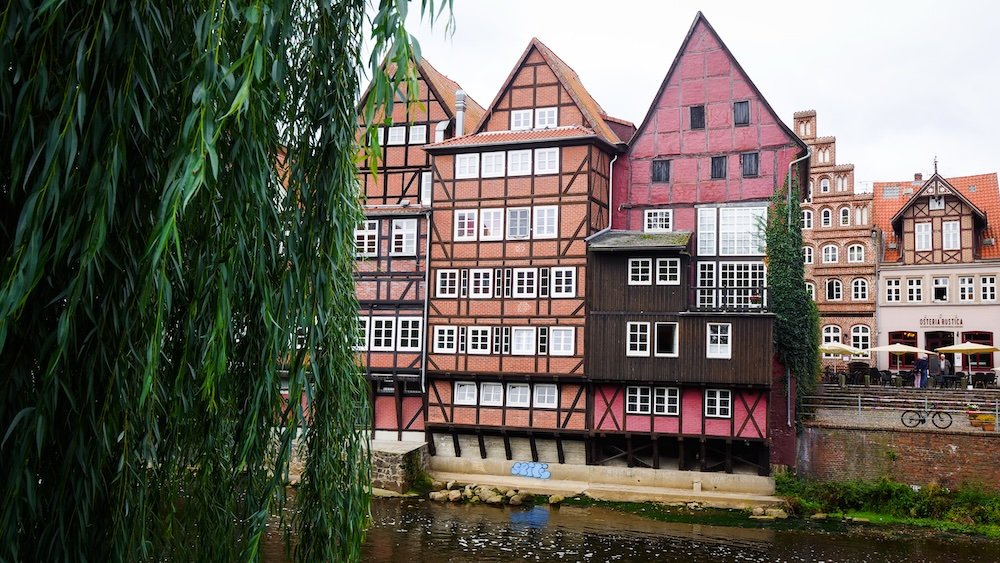
Balance Planning with Spontaneity
Sure, planning helps. Booking a walking tour or checking museum hours ensures no wasted efforts. But keep an afternoon free for random alley detours. You might stumble upon a secret courtyard café or an impromptu craft market. Let curiosity lead you. The compact layout spares you from big-city travel times, so an unstructured hour can yield big rewards. This synergy of well-chosen tours and casual meandering suits Lüneburg’s gentle spirit.
Beyond the City Limits
If time allows, sample the broader region: take a short train to Hamburg’s bustle or cycle into the Lüneburg Heath. Each side trip magnifies your sense of Germany’s varied tapestry—industrial port towns, rolling heather fields, smaller villages preserving old ways. But always circle back to Lüneburg’s comforting base. Let it be your anchor in Lower Saxony, the place you return to for calmer evenings.
Ultimately, Lüneburg exemplifies the beauty of smaller European gems. Quiet yet profound, proud yet unassuming. Until next time, auf Wiedersehen!
